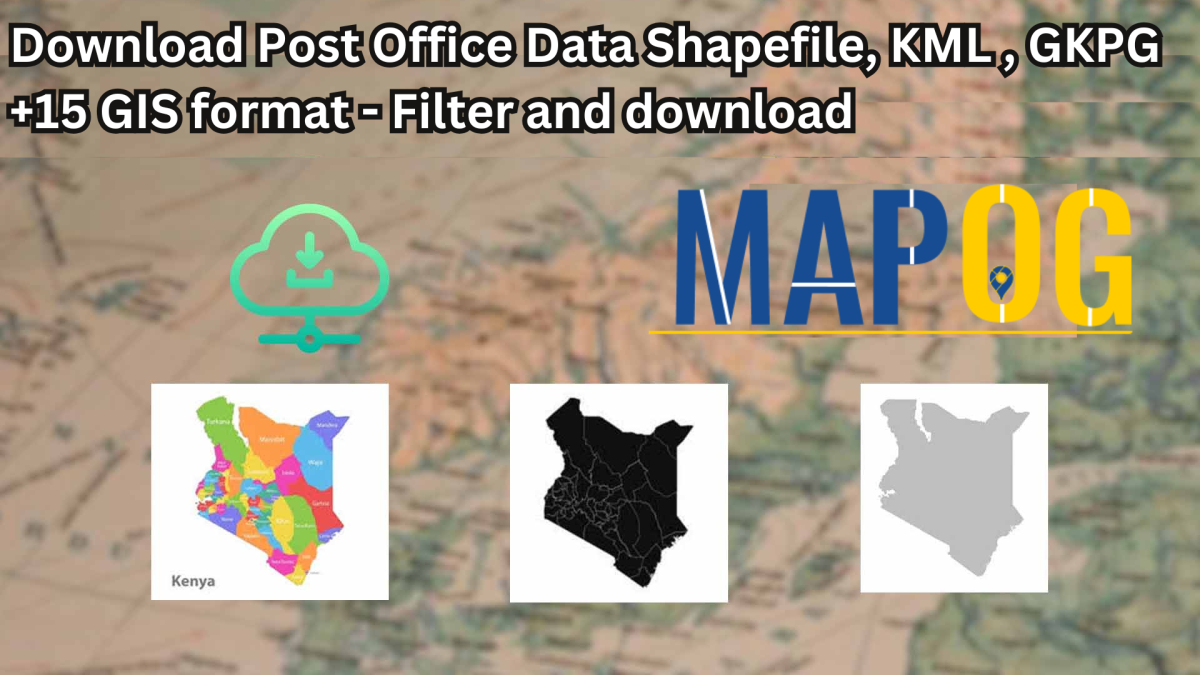Looking for structured post office location data? Download Post Office Data effortlessly using GIS Data by MAPOG. This powerful platform provides multiple GIS formats, including Shapefile, KML, MID, and GeoJSON, ensuring seamless integration with various GIS applications. Whether the data is required for logistics, urban development, or postal network analysis, MAPOG delivers precise and up-to-date geographic datasets for accurate mapping and research.
How to Download Post Office Data
GIS Data by MAPOG streamlines the entire process, offering users access to thousands of geographic datasets in over 900+ layers. The platform supports numerous formats such as SHP, KML, CSV, GeoJSON, SQL, DXF, MIF, TOPOJSON, and GPX, making it a go-to resource for GIS professionals, researchers, and planners.
Download Post Office Data of any countries
Note:
- All data is provided in GCS datum EPSG:4326 WGS84 CRS (Coordinate Reference System).
- Users need to log in to access and download their preferred data formats.
Step-by-Step Guide to Download Post Office Data
Step 1: Search for Post Office Data
Begin by selecting the region of interest in GIS Data by MAPOG. Utilize the search function to find “Post Office Data.” Check whether the dataset is available in point or polygon format based on your needs.
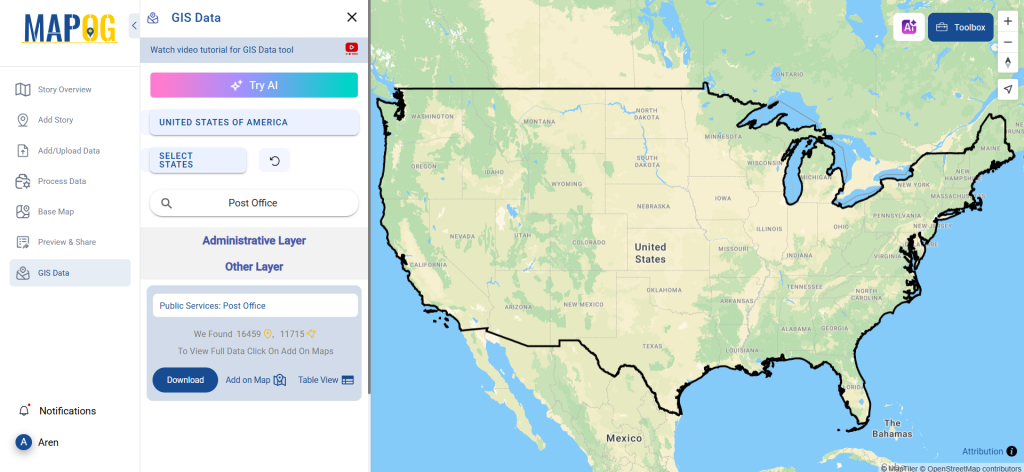
Step 2: Utilize the AI Search Tool
For faster and more precise results, use MAPOG’s “Try AI” search feature. Simply enter relevant keywords like “Post Offices in area,” and the AI tool will instantly fetch the most accurate datasets. This enhances efficiency and ensures quick access to relevant data.
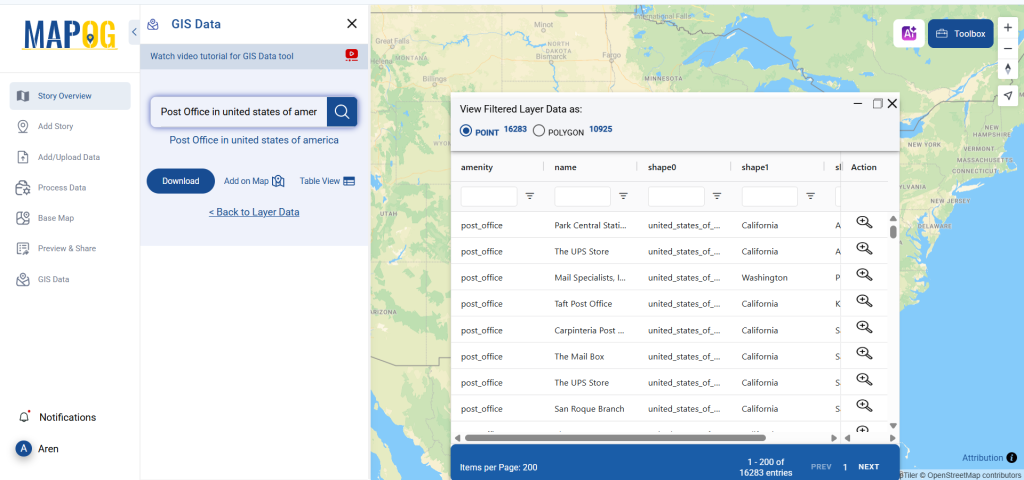
Step 3: Apply Data Filters
Narrow down results using the Filter Data option. Users can refine searches based on states and districts, allowing for a more detailed and targeted approach to data collection. If a country-wide dataset is available, filtering at the state and district level enables a deeper understanding of postal distribution.
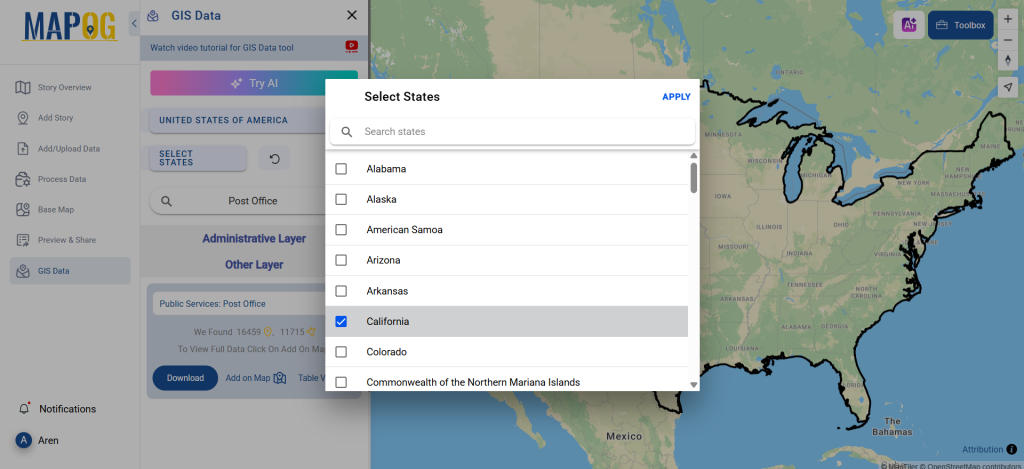
Step 4: Visualize with ‘Add on Map’
The Add on Map feature provides users with an interactive way to overlay selected datasets onto a GIS interface for analysis. This visualization step is crucial in identifying postal service coverage, accessibility, and spatial patterns before downloading the dataset.
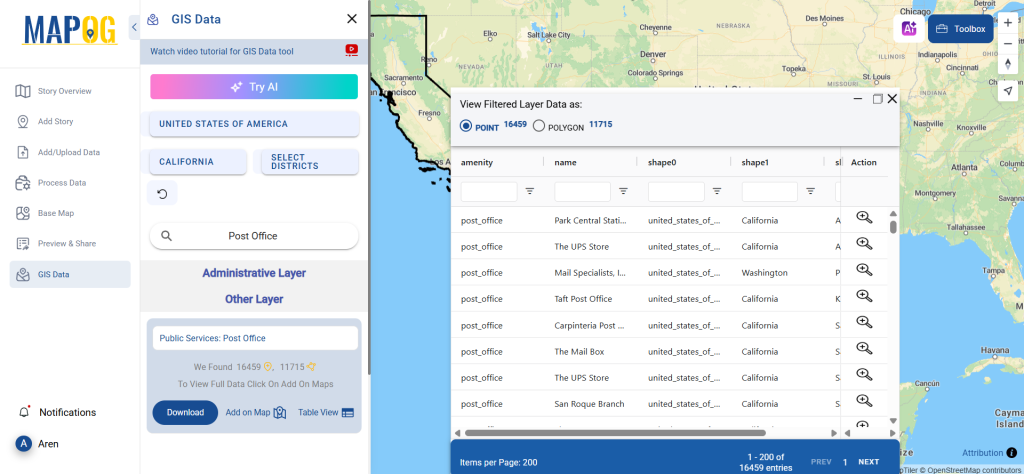
Step 5: Download Post Office Data
Once satisfied with the dataset, proceed to the Download Data option. Choose between a sample dataset or the complete version. Select the required format (Shapefile, KML, MID, or others), accept the terms, and click download. The data will be ready for use in various GIS tools for further analysis.
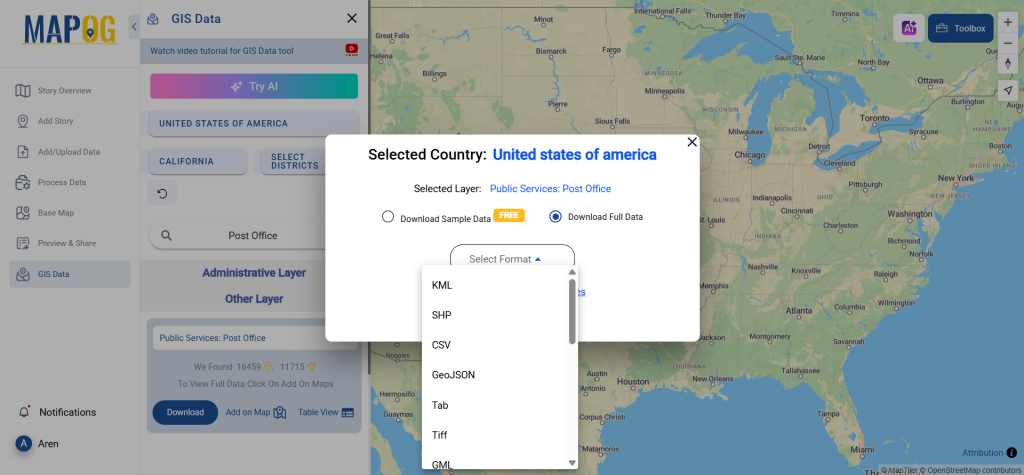
Final Thoughts
With GIS Data by MAPOG, Downloading Post Office Data has never been more accessible. The platform ensures users can obtain comprehensive datasets in multiple formats, making it an invaluable resource for postal network analysis, logistics, and GIS-based planning. Whether for research, infrastructure management, or service optimization, this tool provides the insights needed for data-driven decision-making.
With MAPOG’s versatile toolkit, you can effortlessly upload vector and upload Excel or CSV data, incorporate existing layers, perform polyline splitting, use the converter for various formats, calculate isochrones, and utilize the Export Tool.
For any questions or further assistance, feel free to reach out to us at support@mapog.com. We’re here to help you make the most of your GIS data.
Download Shapefile for the following:
- World Countries Shapefile
- Australia
- Argentina
- Austria
- Belgium
- Brazil
- Canada
- Denmark
- Fiji
- Finland
- Germany
- Greece
- India
- Indonesia
- Ireland
- Italy
- Japan
- Kenya
- Lebanon
- Madagascar
- Malaysia
- Mexico
- Mongolia
- Netherlands
- New Zealand
- Nigeria
- Papua New Guinea
- Philippines
- Poland
- Russia
- Singapore
- South Africa
- South Korea
- Spain
- Switzerland
- Tunisia
- United Kingdom Shapefile
- United States of America
- Vietnam
- Croatia
- Chile
- Norway
- Maldives
- Bhutan
- Colombia
- Libya
- Comoros
- Hungary
- Laos
- Estonia
- Iraq
- Portugal
- Azerbaijan
- Macedonia
- Romania
- Peru
- Marshall Islands
- Slovenia
- Nauru
- Guatemala
- El Salvador
- Afghanistan
- Cyprus
- Syria
- Slovakia
- Luxembourg
- Jordan
- Armenia
- Haiti And Dominican Republic
- Malta
- Djibouti
- East Timor
- Micronesia
- Morocco
- Liberia
- Kosovo
- Isle Of Man
- Paraguay
- Tokelau
- Palau
- Ile De Clipperton
- Mauritius
- Equatorial Guinea
- Tonga
- Myanmar
- Thailand
- New Caledonia
- Niger
- Nicaragua
- Pakistan
- Nepal
- Seychelles
- Democratic Republic of the Congo
- China
- Kenya
- Kyrgyzstan
- Bosnia Herzegovina
- Burkina Faso
- Canary Island
- Togo
- Israel And Palestine
- Algeria
- Suriname
- Angola
- Cape Verde
- Liechtenstein
- Taiwan
- Turkmenistan
- Tuvalu
- Ivory Coast
- Moldova
- Somalia
- Belize
- Swaziland
- Solomon Islands
- North Korea
- Sao Tome And Principe
- Guyana
- Serbia
- Senegal And Gambia
- Faroe Islands
- Guernsey Jersey
- Monaco
- Tajikistan
- Pitcairn
Disclaimer : The GIS data provided for download in this article was initially sourced from OpenStreetMap (OSM) and further modified to enhance its usability. Please note that the original data is licensed under the Open Database License (ODbL) by the OpenStreetMap contributors. While modifications have been made to improve the data, any use, redistribution, or modification of this data must comply with the ODbL license terms. For more information on the ODbL, please visit OpenStreetMap’s License Page.
Here are some blogs you might be interested in:
- Download Airport data in Shapefile, KML , MIf +15 GIS format – Filter and download
- Download Bank Data in Shapefile, KML, GeoJSON, and More – Filter and Download
- Download Railway data in Shapefile, KML, GeojSON +15 GIS format
- Download Farmland Data in Shapefile, KML, GeoJSON, and More – Filter and Download
- Download Pharmacy Data in Shapefile, KML, GeoJSON, and More – Filter and Download
- Download ATM Data in Shapefile, KML, MID +15 GIS Formats Using GIS Data by MAPOG
- Download Road Data in Shapefile, KML, GeoJSON, and 15+ GIS Form
